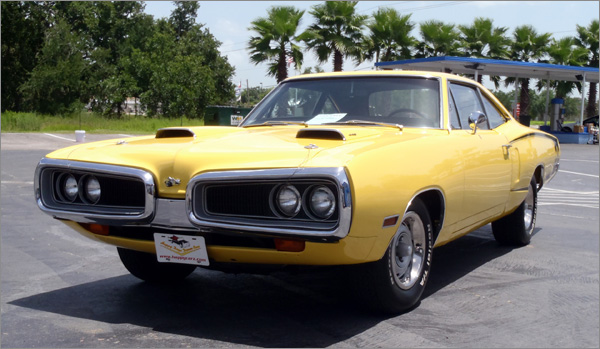1970 Dodge Super Bee, Lot 356.2
VIN: WM21V0G145036
This is a matching-numbers “V” Code car. This beautiful car only has 85,000 original miles. The exterior and interior are in great condition. This car has been restored to its original color of Top Banana. The body is very straight with good gaps. Chrome front and rear bumper are beautiful. The underside is exceptionally clean with no surface rust showing on any of the components, including the exhaust system, which has been upgraded to stainless steel.
This Super Bee has a 440-ci Six Pack engine rated at 390 horsepower. The car is fitted with a TorqueFlite automatic transmission, torsion bar front suspension with spring rear and 4-wheel power drum brakes.
The interior is all stock with the exception of an aftermarket water temperature gauge and the factory tach has been replaced with an Autometer unit. Options coded, based on the data plate, include variable speed wipers, hood tie down pins, tachometer, fresh air hood intake, Music Master AM radio and dress-up package. Seatbelts have also been installed for modern safety. This Bee is a head turner and ready to be driven home.
1970 Dodge Super Bee, Lot 640.1
VIN: WM21V0G257900
This a real “V” Code 440 Six Pack, with matching-numbers engine, pistol-grip 4-speed transmission, DANA 60 rear axle, go wing, factory tachometer and gauges, Polyglas tires, heavy duty cooling. All original sheet metal and original Fender Tag. Refinished in its rare original color of Plum Crazy purple with black transverse strip. Very few Six Pack 4-speed Super Bees were produced.

